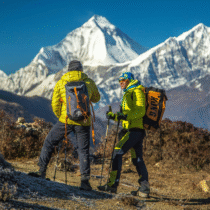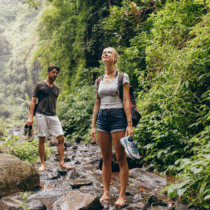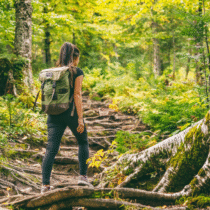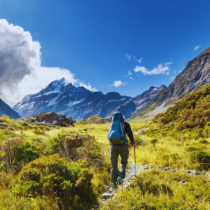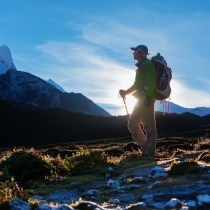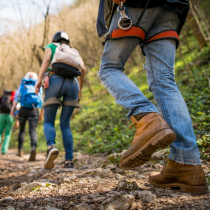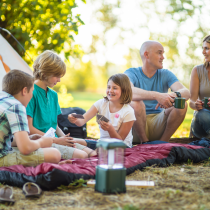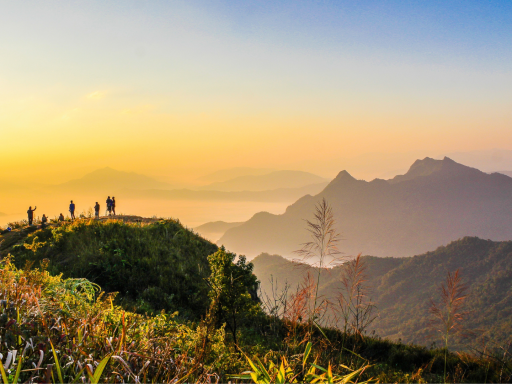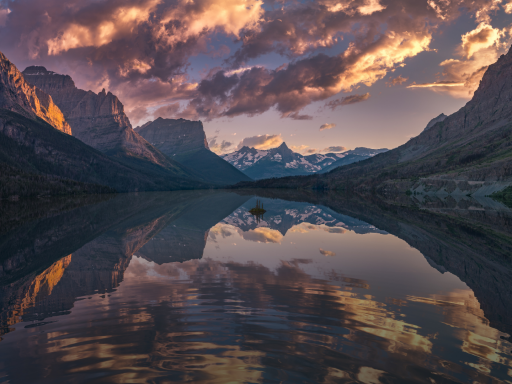Preparing for a challenging hiking trail requires dedication and a strategic approach. To train effectively, focus on building endurance, strength, and flexibility through a combination of cardio exercises, strength training, and practice hikes. Setting specific hiking goals can help guide the training process, ensuring that each session contributes to improved performance on the trail.
Incorporating various terrains in training can simulate the conditions of the actual hike. This diversity not only prepares the body for different challenges but also helps prevent injuries. Regularly climbing hills and carrying a weighted backpack can further enhance strength and stamina, which are crucial for tackling steep elevations.
As the hiking date approaches, gradually increasing the intensity and duration of hikes will further acclimate the body. Consistent training not only boosts confidence but also ensures they are physically prepared to enjoy the outdoor experience without unnecessary strain.
Setting Hiking Goals and Preparing Strategically
Setting clear hiking goals and preparing strategically is essential for effective training. The right approach enhances trail fitness and boosts confidence when facing challenging hikes, whether for day hikes or backpacking adventures.
Assessing Fitness Levels
Before setting goals, it’s important to assess current fitness levels. This can be done through self-evaluation or by consulting a personal trainer. Key areas to focus on include cardiovascular endurance, strength, and flexibility.
A simple fitness test may involve a timed walk over a set distance or climbing stairs. Gathering data on distance covered, heart rate, and perceived exertion can provide insight into one’s baseline fitness. This information helps tailor future training efforts to ensure they effectively meet personal needs.
Establishing Realistic Hiking Goals
Hiking goals should be specific, measurable, achievable, relevant, and time-bound (SMART). For instance, aiming to complete a particular trail within a set time or to increase weekly hike distances by 10% can be effective.
Consider setting both short-term and long-term goals. Short-term goals create immediate motivation, while long-term goals provide direction. They should align with individual interests and trail challenges, ensuring a personal connection to the hike ahead.
Designing a Tailored Training Plan
A tailored training plan is crucial for success. It should incorporate a mix of cardio, strength training, and flexibility exercises.
A sample weekly schedule might include:
- 3 Cardio Sessions: Activities like jogging, biking, or swimming.
- 2 Strength Workouts: Focused on leg and core muscles to handle varying terrains.
- 1 Flexibility Session: Incorporating yoga or stretching routines.
Cross-training is beneficial as it builds overall fitness. Gradually increasing the intensity of both hikes and workouts simulates the actual trail conditions, improving stamina and muscle adaptation.
Building Physical Strength and Endurance
Developing physical strength and endurance is crucial for anyone training for a challenging hiking trail. Focus on various components such as strength training, cardiovascular fitness, and core stability to prepare effectively.
Essential Strength Training for Hikers
Strength training enhances muscle endurance and stability, which are vital for tackling rugged terrains. Key exercises include:
- Lunges: Effective for building leg strength and improving balance.
- Calf Raises: Target the calf muscles to aid in uphill climbs.
- Step-Ups: Mimic the action of ascending and descending trails.
- Jump Squats: Build explosive power in legs, beneficial for steep sections.
Aiming for two to three strength sessions per week will promote muscle growth. Incorporating resistance training helps develop the muscular endurance required for extended hikes.
Endurance and Cardiovascular Conditioning
Improving cardiovascular endurance boosts stamina on long hikes. This can be achieved through activities like running, cycling, or swimming. Key components include:
- Aerobic Training: Engage in steady-state cardio sessions, gradually increasing duration.
- HIIT Training: High-Intensity Interval Training improves both aerobic and anaerobic systems. Intervals should focus on short bursts of intense effort followed by recovery periods.
Aim for a mix of longer, moderate-intensity workouts and shorter, high-intensity sessions to build complete endurance. Regular cardiovascular work enhances oxygen delivery, crucial for sustained effort on trails.
Core Stability and Injury Prevention
A strong core provides balance and prevents injuries when hiking. Exercises to integrate include:
- Planks: Build overall core strength.
- Mountain Climbers: Enhance core stability while also serving as a cardio workout.
- Russian Twists: Improve rotational strength important during uneven terrain navigation.
Include core workouts two to three times weekly within a broader training regimen. This focus on core strength not only enhances performance but also minimizes the risk of injuries during hiking.
Progressive Overload and Consistency
To see continued improvement, apply the principle of progressive overload in all training. This can involve gradually increasing:
- Weights in strength training exercises.
- Duration of cardio sessions.
- Intensity of workouts over time.
Consistency is vital for long-term gains. Establishing a well-structured workout plan that balances strength training, cardiovascular conditioning, and core exercises facilitates continual progression. Make adjustments based on performance feedback to ensure ongoing development while avoiding plateaus.
Developing Hiking-Specific Skills and Preparation
Preparing for a challenging hiking trail involves not only physical fitness but also skill development and mental readiness. Properly addressing elevation, terrain, and equipment can significantly impact performance and enjoyment during long hikes.
Training for Elevation and Terrain Challenges
To conquer trails with significant elevation gain, it’s crucial to engage in a hiking-specific training program. This program should include hill workouts and stair climbing to simulate outdoor conditions. Gradually increase the elevation incline to build strength and stamina.
Incorporating varied terrain into training prepares one for rocks, roots, and uneven surfaces. Practicing on different trails enhances balance and agility. Focus on endurance with longer hikes to develop trail fitness.
Key Exercises:
- Hill repeats
- Stair climbs
- Long-distance hikes
Backpacking and Pack Weight Management
Proper pack weight management can influence comfort and performance. A general rule is to keep the pack weight around 10-20% of body weight. Achieving this balance ensures sustainability on trekking routes.
Utilize a backpack that fits well and suits the trip length. Experiment with gear during training hikes. This will help identify what items are essential versus those that can be left behind. Reducing unnecessary weight can mitigate knee pain and fatigue during long hikes.
Pack Weight Considerations:
- Shelter: Lightweight tent or tarp
- Sleeping gear: Compact sleeping bag
- Food and water: Select high-calorie, lightweight options
Hiking Gear Selection and Use
Selecting the right hiking gear directly affects performance and safety. Quality footwear tailored for the specific trail terrain is non-negotiable. Proper fit and type can help prevent blisters and enhance stability.
Clothing made of moisture-wicking materials maintains comfort during hikes. Layers allow for adjustments based on changing weather conditions.
Essential gear includes:
- Trekking poles for stability on challenging sections
- Navigation tools, such as maps or GPS, for unfamiliar routes
- First-aid kits for quick responses to minor injuries
Mental Preparation for Difficult Trails
Mental preparation is as important as physical training when tackling demanding hikes. Visualization techniques help reinforce confidence. Picture successfully navigating steep slopes or enduring adverse weather conditions.
Set realistic goals for each hike and celebrate milestones along the way. This builds a positive mindset and resilience. Incorporating mindfulness practices during training can enhance focus and reduce anxiety. Reflecting on past hiking experiences aids in developing coping strategies for challenges.
Mental Training Tips:
- Visualize successful hikes
- Set achievable goals
- Practice mindfulness during hikes
By integrating these elements into preparation, hikers can enhance their overall experience on challenging trails.
Optimizing Recovery, Nutrition, and Flexibility
Attention to recovery, nutrition, and flexibility can enhance performance on challenging hiking trails. Implementing strategies in these areas supports physical readiness, minimizes injury risk, and promotes overall well-being.
Hydration and Nutritional Strategies
Adequate hydration is essential for maintaining endurance during hikes. Drink water consistently before, during, and after hiking. A recommended guideline is to consume about 2-3 liters of water daily, increasing this amount during strenuous activities.
Nutritional choices also affect performance. A balanced diet should include:
- Complex carbohydrates: Provide sustained energy (e.g., whole grains, fruits).
- Proteins: Aid in muscle recovery (e.g., lean meats, legumes).
- Healthy fats: Support overall health and energy levels (e.g., nuts, avocados).
Incorporate snacks like energy bars or trail mix during hikes to maintain energy levels. Adjusting caloric intake based on trail difficulty can further optimize performance.
Stretching and Flexibility Routines
Incorporating flexibility routines helps reduce injury risk. Engaging in stretching exercises improves muscle elasticity and range of motion.
A recommended approach includes:
- Dynamic stretches before hikes (e.g., leg swings, arm circles) to warm up muscles.
- Static stretches post-hike (e.g., hamstring stretches, quadriceps stretches) to enhance flexibility and recovery.
Pilates can be beneficial as it focuses on core stability and alignment, enhancing overall body strength. Additionally, regular flexibility training can improve endurance and support cardio exercises.
Recovery Techniques for Hikers
Effective recovery techniques facilitate muscle healing and improve performance for future hikes. Prioritize adequate rest, ensuring that muscle groups receive time to recover.
Incorporate techniques such as:
- Foam rolling: Helps to alleviate muscle tightness and improve blood flow.
- Gentle yoga: Enhances flexibility and promotes relaxation.
- Cold therapy: Reduces inflammation and speeds up recovery.
Regular cardiovascular endurance training and strength exercises also help maintain leg strength and improve overall fitness. Balancing these elements supports long-term hiking performance.

